Misc
muPad Parts of Homeworks
When assignments ask you to do something with muPad, please bring your answers to those parts to grading appointments — as print-outs from muPad, screen shots, bring a computer with your muPad work, etc.
Questions?
Problem 1 on Problem Set 3?
Draw a graph somewhat like we did when introducing ε - δ proofs that shows visually how a generic ε interval corresponds to a δ interval.
We did it sort of like this, you need to do it for sin(x) rather than for a linear function.
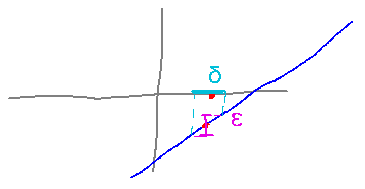
Differentiation Rules
Section 3.3.
Basic Rules
Examples. Find dy/dx if y = x4. What about y = x-3? What if y = π?
Reading ideas: the power rule says that d/dx( xn ) = n xn-1.
The constant rule says d/dx( c ) = 0
So...
- d/dx( x4 ) = 4x3
- d/dx( x-3 ) = -3x-4
- d/dx( π ) = 0
Take-Aways. The power and constant rules.
“Linear” Rules
(i.e., sum, difference, constant multiple)
Example. Find g′(x) given that g(x) = x3 + 7x
From the power, sum, and constant multiple rules, g′(x) = 3x2 + 7
Example. Find dr/dt given that r = 3t7 - 5 + 12t3
From the constant multiple, sum, and power rules (and the difference and constant rules, but their results aren’t visible in the final derivative), dr/dt = 21t6 + 36t2
Take-Aways. The addition, subtraction, and constant multiple rules.
Rules are usually used in combination with each other.
Prove the difference rule and constant multiple rules.
Reading ideas: use the limit definition of the derivative.
In other words, use the limit definition to show how the left-hand side of each rule really is equal to the right-hand side.
For the constant multiple rule, this looks like...
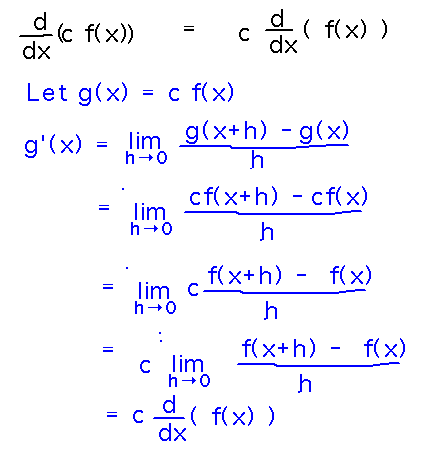
And here’s the proof of the difference rule:
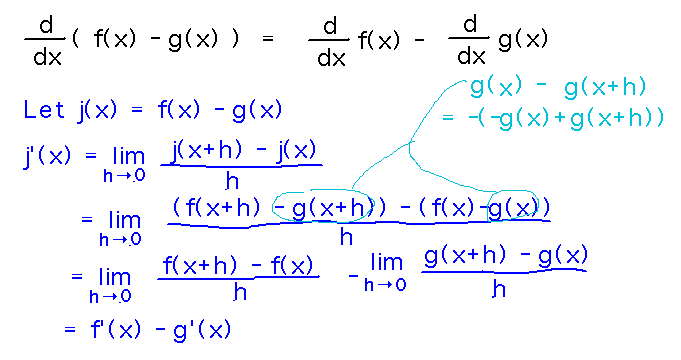
Take-Aways. The differentiation rules really do come from somewhere, they have proofs. Beginning to understand how proofs work is an important part of becoming a mathematician.
Derivatives in muPad
The key command is diff, whose arguments are the expression to differentiate and the variable to differentiate with respect to. This is handy for differentiating expressions that you don’t know how to (yet), or that you wouldn’t want to do by hand.
You can also give names to expressions or results so that you don’t have to type the expressions over and over. Use := to do this.
And you can plot multiple functions at once by listing them in the same plot command.
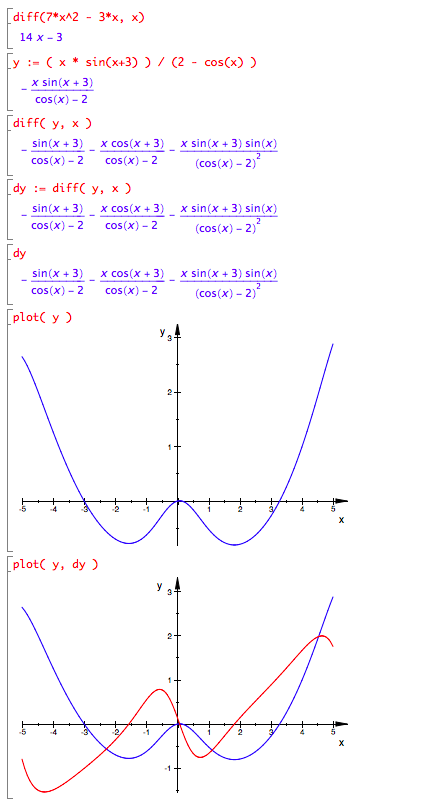
Antiderivatives
Example. Find f(x) given that f′(x) = 6x - 7.
3x2 - 7x
or 3x2 - 7x + 4
Most generally 3x2 - 7x + C where C is any real number. Antiderivatives aren’t unique.
You can do this in muPad too, with the int command. Its arguments are an expression to find an antiderivative of, and the variable to do it with respect to.
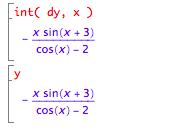
Take-Away. The differentiation rules are (mostly) reversible, and give rise to corresponding antidifferentiation rules.
Next
The product and quotient rules